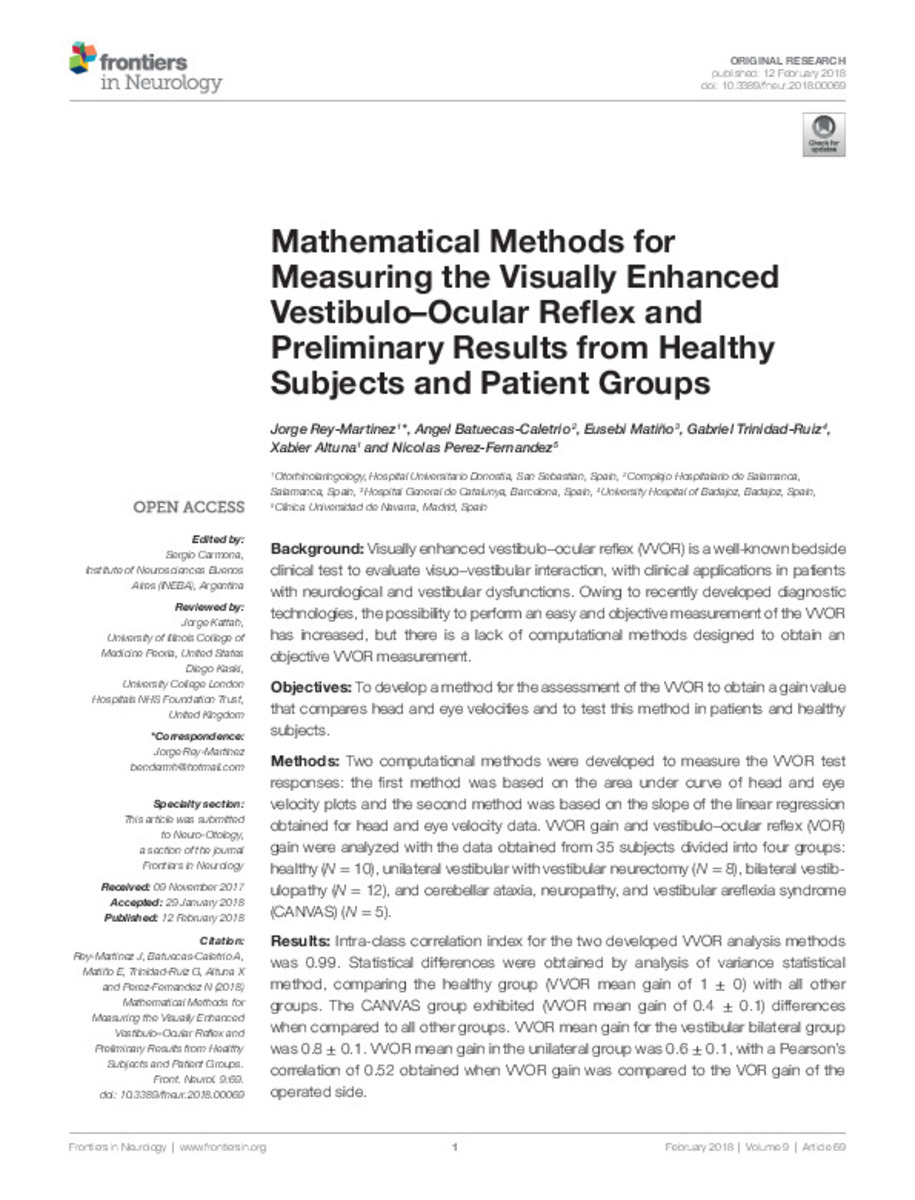Mathematical methods for measuring the visually enhanced vestibulo-ocular reflex and preliminary results from healthy subjects and patient groups
Keywords:
Visually enhanced VOR
Visual–vestibular interaction
Canvas
Vestibular schwannoma
Gain
Dessaccade
Vestibulo–ocular reflex
Video head impulse test
Algorithms
Publisher:
Frontiers Media
Note:
This is an open-access article distributed under the terms
of the Creative Commons Attribution License (CC BY). The use, distribution or
reproduction in other forums is permitted, provided the original author(s) and the
copyright owner are credited and that the original publication in this journal is cited,
in accordance with accepted academic practice. No use, distribution or reproduction
is permitted which does not comply with these terms.
Citation:
Rey-Martinez, J.A. (Jorge Alberto); Batuecas-Caletrio, A. (Angel); Matiño, E. (Eusebi); et al. "Mathematical methods for measuring the visually enhanced vestibulo-ocular reflex and preliminary results from healthy subjects and patient groups". Frontiers in neurology. 9 (69), 2018,
Statistics and impact
0 citas en

Items in Dadun are protected by copyright, with all rights reserved, unless otherwise indicated.









